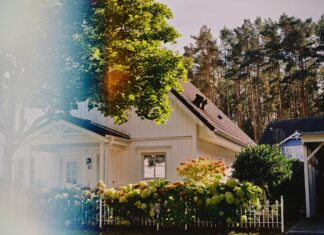The adoption of pesticide-free produce has emerged as a potential solution to address modern health-related issues that were not prevalent during the era of traditional farming practices. With the rise of industrial agriculture, the use of synthetic pesticides became widespread to protect crops from pests and maximize yields. However, mounting evidence suggests that exposure to these chemical compounds may have adverse effects on human health, including an increased risk of certain cancers, neurological disorders, and hormonal imbalances. By embracing pesticide-free farming methods, such as organic or regenerative practices, we can minimize the potential health risks associated with pesticide exposure and promote the consumption of cleaner, safer produce.
In the face of mounting challenges such as climate change, pragmatic solutions like commercial greenhouse companies offer promising avenues to address the looming food shortage crisis. Climate change-induced extreme weather events, including droughts, floods, and heat waves, pose significant threats to traditional agriculture, leading to yield losses and decreased productivity. Greenhouses provide a controlled environment that mitigates these risks by offering temperature, humidity, and light regulation. This enables farmers to cultivate crops year-round, independent of external climatic conditions.
By harnessing innovative technologies like hydroponics and vertical farming within greenhouses, farmers can optimize resource utilization, reduce water consumption, and enhance crop yields. Additionally, greenhouses minimize reliance on chemical pesticides and fertilizers by creating a barrier against pests and diseases. These enclosed systems also reduce the need for vast expanses of land, making them viable options for urban areas where space is limited. With their potential to boost food production, commercial greenhouses emerge as practical solutions to counteract the adverse effects of climate change on traditional farming and address the pressing issue of food scarcity.
Rising Importance of Greenhouses
Table of Contents
Commercial greenhouses have become increasingly popular as a means to sustainably grow crops and address the challenges of traditional farming methods. These controlled environments offer year-round cultivation, optimal resource utilization, and protection against unpredictable weather conditions. However, before embarking on the construction of a commercial greenhouse, it is crucial to understand the factors that influence its cost and consider important tips to ensure a successful setup.
Important Tips to Remember When Setting Up a Commercial Greenhouse
Conduct Thorough Research: Before building a commercial greenhouse, it is essential to research the local climate, market demand, and specific crop requirements. Understanding these factors will help in designing an efficient and cost-effective structure.
-
Choose the Right Location
Select a location with ample space with sunlight exposure and minimal shading from surrounding structures or trees. Proximity to markets and utilities such as water and electricity is also crucial for convenience and cost-effectiveness.
-
Determine the Purpose
Define the purpose of your commercial greenhouse, whether it’s for vegetable production, flower cultivation, or research. The intended purpose will impact the design, equipment, and overall cost.
-
Design for Efficiency
Optimize the greenhouse design for efficient energy use, water management, and ventilation. Utilize technologies like double glazing, insulation, automated systems, and efficient heating and cooling methods to minimize operational costs.
-
Invest in Quality Equipment
Choose high-quality equipment such as irrigation systems, ventilation fans, shading systems, and lighting fixtures. Although they may increase the initial investment, they contribute to long-term efficiency and productivity.
-
Consider Environmental Sustainability
Incorporate eco-friendly practices into your greenhouse design, such as rainwater harvesting, renewable energy sources, and recycling systems. These measures reduce operational costs and align with sustainable farming principles.
Factors Influencing the Cost of Building a Commercial Greenhouse
Size and Layout
The size and layout of the greenhouse are significant determinants of cost. Larger structures require more materials, labor, and equipment. Additionally, complex layouts with multiple compartments or specialized sections can increase expenses.
Construction Materials
The choice of construction materials impacts both the initial investment and long-term operational costs. Options include glass, polycarbonate, or polyethylene for covering, and steel, aluminum, or timber for the frame. Each material has its own cost implications and durability factors.
Heating, Ventilation, and Cooling Systems
HVAC systems are vital for maintaining optimal temperature and humidity levels inside the greenhouse. The cost of these systems depends on the size of the greenhouse, the climate, and the desired level of automation and control.
Lighting Systems
Depending on the crop type and the need for year-round production, artificial lighting systems may be necessary. LED lighting has become popular due to its energy efficiency and long lifespan, but it can add to the initial setup cost.
Irrigation and Water Management
The choice of irrigation systems, such as drip irrigation or overhead sprinklers, and the water source availability can impact the cost. Incorporating water management practices like recycling and rainwater harvesting can add initial expenses but result in long-term savings.
Automation and Control Systems
Automated systems for climate control, irrigation, and nutrient management can significantly increase productivity and reduce labor costs. However, the more advanced the automation and control systems, the higher the initial investment.
Labor Costs
The cost of labor depends on factors such as the complexity of the greenhouse design, the need for skilled workers, and the duration of the construction process. Hiring experienced professionals ensures quality workmanship but may come at a higher cost.
Ancillary Structures and Utilities
Consideration should be given to additional structures like storage areas, offices, and employee facilities. The cost of utilities such as water supply, electricity, and gas connections should also be factored into the overall budget.
Permits and Regulations
Obtaining permits and complying with building codes and regulations may incur additional costs. It is crucial to consult with local authorities and obtain the necessary permits before commencing construction
Conclusion:
As a farmer there is a lot on your table to worry about like the changing palette needs, rising nutritional awareness, demand for organically grown produce that is subjected to the use of harmful pesticides, reducing the population of bees and pollinators, farm labor issues, and other economic factors. If a single greenhouse helps in better productivity and yields that can reduce at least the economic problems associated with agricultural losses, as a farmer or a commercial grower, you should invest in one.










